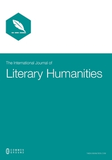
Citation: Manzari, Valerio, Joanny Moulin, and Francesca Manzari. 2024. "For an Atlas of Intellectual Migrations in the Mediterranean of the Thirteenth Century." The International Journal of Literary Humanities 23 (3): 87-106. doi:10.18848/2327-7912/CGP/v23i03/87-106.
Title: For an Atlas of Intellectual Migrations in the Mediterranean of the Thirteenth Century
Author(s): Valerio Manzari, Joanny Moulin, Francesca Manzari
Publisher: Common Ground Research Networks
Series: Common Ground Open
Journal Title: The International Journal of Literary Humanities
Keywords: Geocriticism, Fiction and Diction, Franco Moretti, Frederick II Hohenstaufen, Mediterranean, Geographic Information Systems, Cultural Transfers, Polysystems
Volume: 23
Issue: 3
Date: August 29, 2024
ISSN: 2327-7912 (Print)
ISSN: 2327-8676 (Online)
DOI: https://doi.org/10.18848/2327-7912/CGP/v23i03/87-106
Extent: 20 pages
Open Access
Copyright © 2024 Authors. Published By Common Ground Research Networks.
This work is licensed under a Creative Commons Attribution 4.0 International License(CC BY 4.0).
View License
Abstract:
This article is a presentation of research project “Atlas of Intellectual Migrations in the Mediterranean of the 13th Century” (AIMM13), taking its inspiration for Franco Moretti’s geocriticism, which it would inflect in three ways at least. First, it would work on the hypothesis that the relationship between landscape and literature is a symbiotic coproduction: Geography generates the novel, as Moretti observed, but the reverse is also true, as literature generates and fashions our landscapes. Second, this is even more easily verifiable if the definition of literature is extended to include what Genette called diction, that is, nonfictional texts in the wider sense. Third, this investigation of how geographical and literary texts coproduce one another calls for the development of specific digital humanities tools or LGIS (Literary Geographical Information System) geoinformatics means, which will lead to the digital publication of dynamic maps along with the written results of research. A particularly promising study case for the development of such an innovative method is Southern Italy at the time of Emperor Frederick II of Hohenstaufen, considered as a node of civilizational evolution in the Mediterranean of the thirteenth century.
